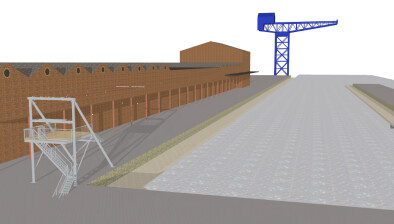And finally… ‘Eccentric’ George III architectural drawing uncovered
An eccentric architectural plan thought to have been drawn by George III during his period of “madness” has been discovered at the British Library, the BBC has reported.
It is part of a huge collection of papers put together by the King during his reign from 1760 to 1820.
The loose piece of paper was tucked inside a volume about the Palaces of Hanover in Germany.
The diagram of a building was drawn in ink over a pencil outline “in a rather savage way”, according to experts.
Peter Barber, head of map collections at the British Library, said the drawing, scribbled on the back of an order of service from St George’s Chapel in Windsor, was “not an ordered plan”.
“You see certain things which are at the very least odd and actually rather disturbing,” he added.
A grand central courtyard with no obvious means of access, surrounded by no fewer than four monumental staircases, was “perhaps a little excessive, even for a Baroque monarch”, Mr Barber said.
Meanwhile, some of the rooms have no doors at all, and there is no way of getting from one room to the next.
Mr Barber concluded that it was drawn when George III’s mind was disturbed.
Numerous theories have been given for the sovereign’s “madness”, from the blood disorder porphyria to episodes of mania corresponding to Bipolar depressive illness.
“It may be a unique survivor of that traumatic period of his life,” he said.
Martin Clayton, head of prints and drawings at the Royal Collection Trust, agreed.
He said the “style” of the drawing was the strongest evidence that it was by George III, being very similar to many other “scribbled architectural plans” made by the King.
“It’s enthusiastic, it’s slightly obsessive in places. And the obsessiveness does suggest that it was probably the work of George III around 1788 or 1789 when he was recovering from his illness.”
The handwriting also strongly resembles that of the monarch.
Mr Clayton believes the plan was a study for the re-development of The White House at Kew, one of a string of royal residences around Richmond and Kew that were built during the 18th Century.
He said contemporaries reported that the King spent a good deal of time “drawing plans somewhat manically for rebuilding the house, while recovering from his first serious illness”.
The architectural floor plan is part of the King’s Topographical Collection. He was a keen armchair traveller, fascinated by geography and a passionate collector. He brought together more than 60,000 maps, views and watercolours from all over the world, particularly Great Britain and the British Empire.














